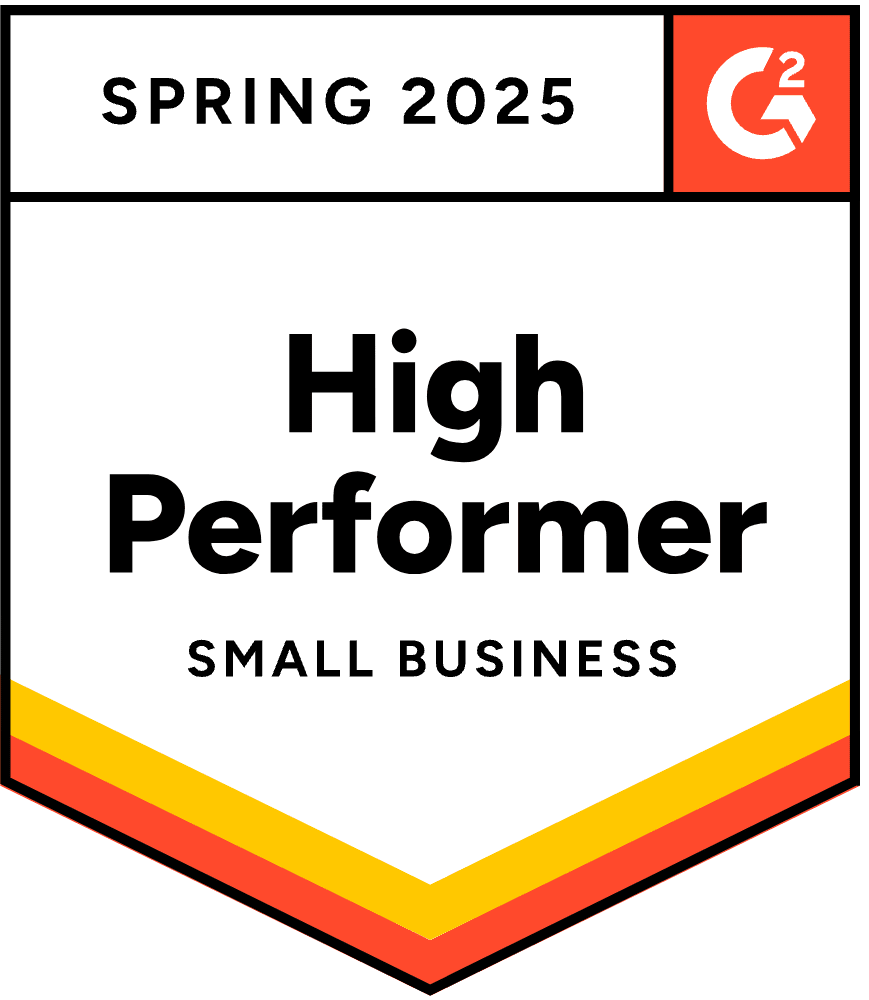- Blog
- Top 10 Scarcity Examples That Create Urgency and Maximize Conversions
Top 10 Scarcity Examples That Create Urgency and Maximize Conversions
-
Nikolett Lorincz
- Marketing
- 6 min read
Table of Contents
When was the last time you saw a product online with a “limited-time offer” and felt that sudden itch to click “Buy Now”?
That small, strategic nudge you experienced taps into a tried-and-true marketing tactic: the scarcity principle.
Leveraging scarcity is a powerful way to build urgency, driving customers to act now rather than later—often transforming an “I’ll think about it” into a “take my money!”
In this article, we’ll explore ten proven scarcity techniques that can increase urgency, boost conversions, and help you hit those ambitious sales targets.
Let’s get started!
Why does the scarcity principle work in marketing?
Scarcity works because it creates urgency by triggering our natural fear of missing out (FOMO) and our instinct to avoid loss.
The psychology of scarcity tells us that people are often more motivated by the thought of losing something than by gaining something of equal value—a concept known as loss aversion.
The statistics speak volumes: conversion rates jump 332% with limited-time offers, and 60% of people say FOMO influences their purchase decisions. These numbers show that when scarcity is done right, it’s more than just a marketing tactic—it’s a conversion powerhouse.
Top 10 scarcity examples
Now, let’s dive into ten actionable scarcity tactics and see how you can implement them to ramp up conversions.
1. Limited-time offers
A classic scarcity tactic, limited-time offers, drives fast action by placing a deadline on discounts or deals. These short-lived promotions, like flash sales or seasonal discounts, spur customers to make quick decisions, fearing they’ll miss the opportunity if they wait too long.
Black Friday and Cyber Monday are famous for using countdown timers that tick down the seconds until the deal expires. These reminders visually reinforce urgency, adding an extra push to “buy before it’s too late.”
Pro tip: Add a countdown timer sticky bar on your website to keep the deadline visible and actionable.
2. Low stock alerts
Those “Only 3 left in stock!” alerts you see online? They’re there to stir urgency. Low stock notifications tell customers that availability is limited, nudging them to act before the item sells out.
Amazon’s “Only X left in stock—order soon” notification does this well. This tactic plays on the fear of missing out (FOMO), making it clear that popular items may not be around for long.
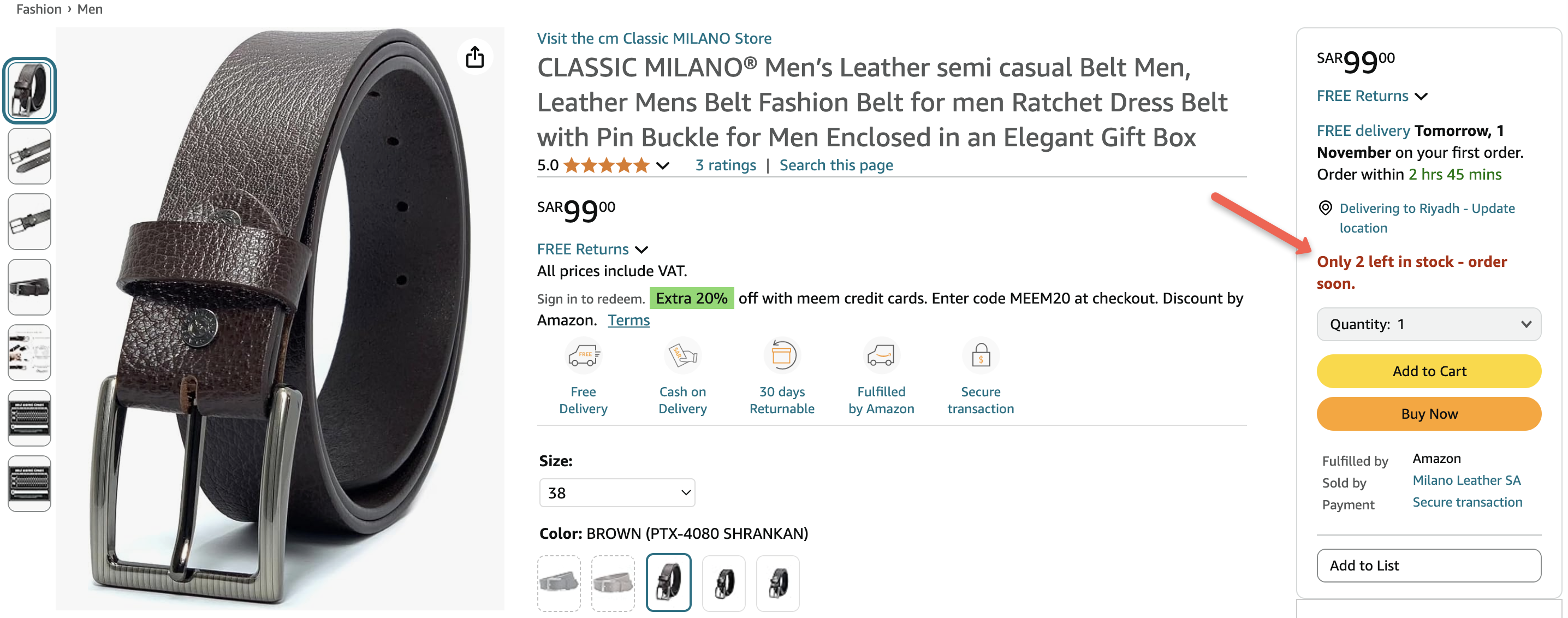
Pro tip: Use real-time inventory updates to keep alerts accurate. If shoppers realize alerts aren’t genuine, they’ll trust you less.
3. Limited quantity products
Releasing products in a limited number of quantities makes customers feel like they’re part of an exclusive group, boosting the product’s desirability and perceived value.
By treating these products as limited resources, their scarcity increases demand and allure. This tactic works well with high-demand items that are either collectible or one-of-a-kind.
Sneaker brands like Nike and Adidas regularly release limited-edition shoes, creating an immediate rush for purchases.
Stanley also uses this strategy effectively. For their limited-edition Barbie x Stanley collaboration, they announced the products in advance, building buzz and gathering eager buyers before the release date.
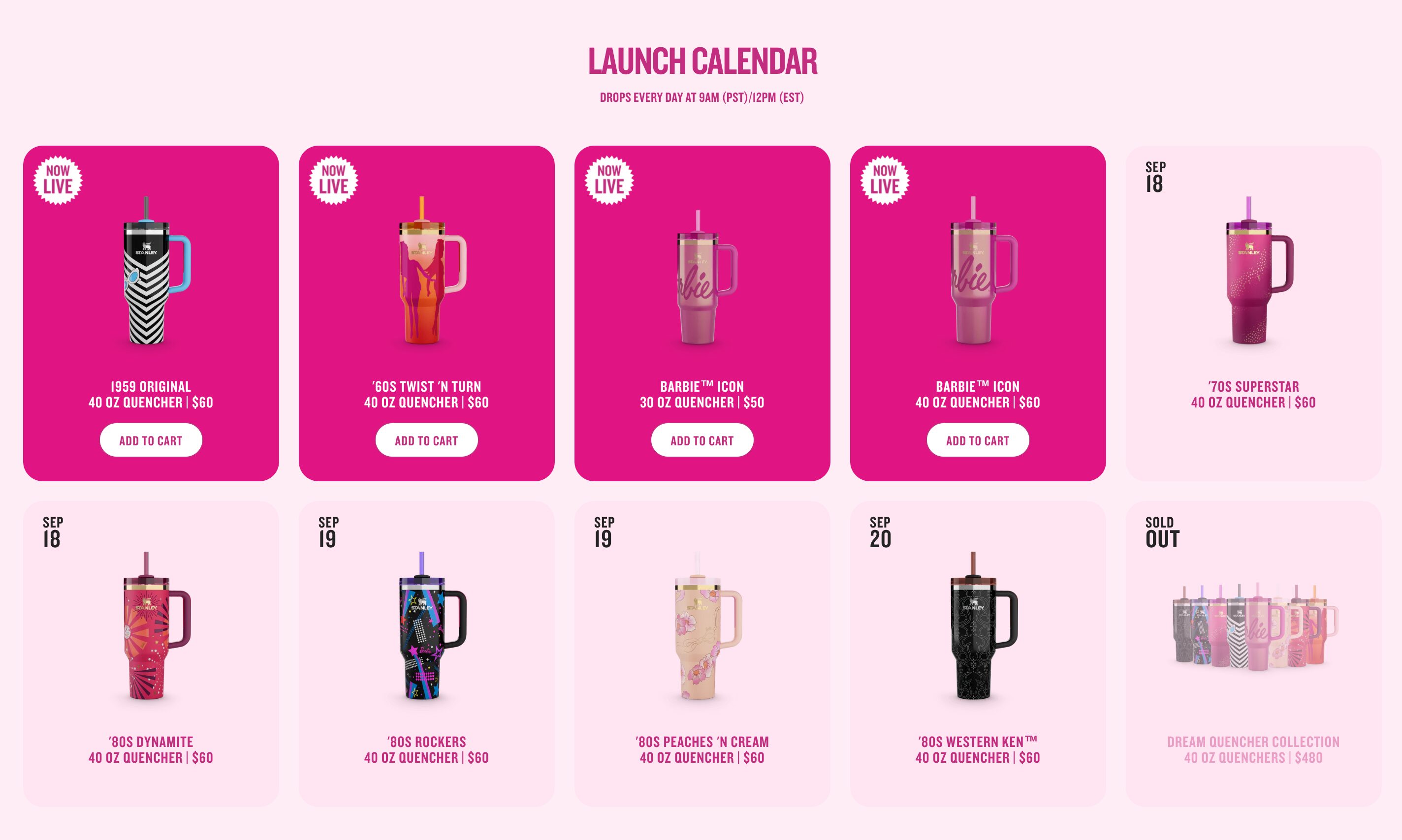
4. Exclusive memberships or VIP programs
Exclusivity can be a significant motivator. By offering memberships or VIP programs that grant early access to sales, special discounts, or unique products, you can make customers feel valued and unique.
Many retailers offer early access to major sales events for VIP members, encouraging non-members to upgrade to unlock these perks.
Sephora’s Beauty Insider program is a great example of this. Their Rouge members—top-tier customers—get first access to big savings events.
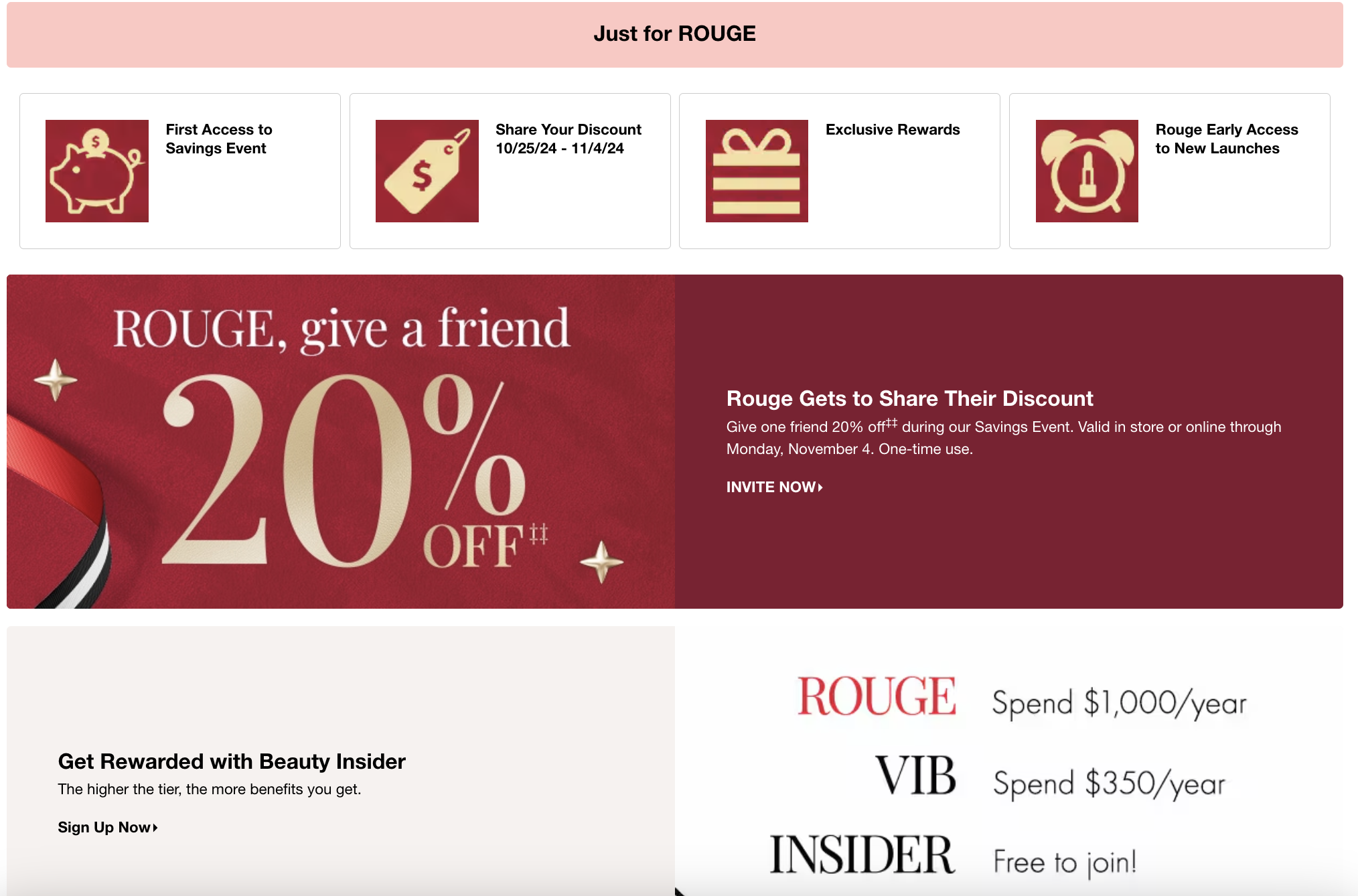
5. First-come, first-served deals
First-come, first-served deals push people to act fast by rewarding prompt action. These deals create a sense of urgency because scarcity affects the perceived value of the offer, making consumers more likely to act quickly.
This tactic is especially effective for event tickets, limited product access, or pre-orders.
Beta releases of software or exclusive event tickets are often available on a first-come, first-served basis, giving an advantage to early responders.
Pro tip: Promote the event or launch heavily beforehand to build up interest and demand.
6. Early-bird discounts
Early-bird pricing incentivizes quick action by offering a discount for those who commit early. This strategy not only drives sales but also helps gauge initial interest in a product or event.
Conferences often offer early-bird pricing to secure early registrations and build buzz. Try using staggered pricing, increasing rates as the event date nears, to push for faster sign-ups.
7. Price increase countdown
Setting a future price increase is a great way to encourage customers to buy now at the current rate before it goes up. This tactic can be a compelling motivator for subscription services, online courses, or software.
Many streaming platforms or SaaS products use messages like “Subscribe before prices go up” to nudge customers toward subscribing sooner rather than later. Just make sure that you’re clear about the date and details of the upcoming price change to make the call-to-action compelling.
8. Limited-time free trials or bonuses
Offering free trials or special bonuses for a brief time gives customers a reason to sign up or buy now, instead of putting it off for later. This works especially well for SaaS businesses or online courses, where a limited-time trial can build confidence in the product.
Some SaaS companies offer extended free trials or bonus features, but only if you sign up within a specific window. Schedule these short-term offers during peak conversion periods, like holidays, to maximize impact.
9. Bundle offers with limited quantities
Bundling products at a discount is effective, but limiting the quantity makes the offer even more tempting. This scarcity tactic is popular during holidays when bundled products are hot-ticket items.
Limiting the number of bundles available creates a sense of urgency, making the offer feel even more special and exclusive.
Waterdrop leverages this strategy during major holidays to boost sales. For Halloween, their “Wicked Hydration Set” bundle was available only in limited quantities, drawing in customers eager to grab this seasonal deal before it ran out.
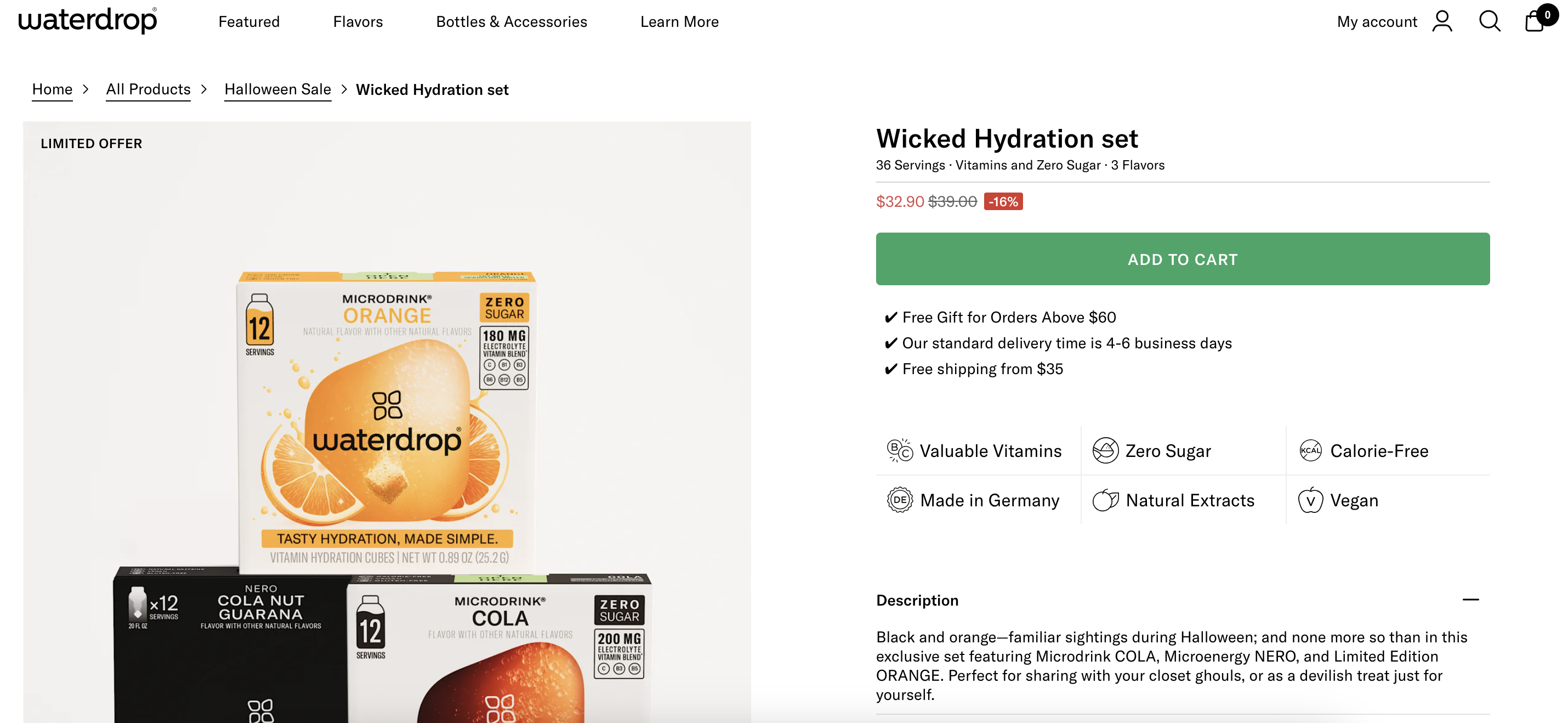
10. Limited access to content or products
Whether it’s member-only access or an invite-only event, limited access taps into people’s desire for exclusivity. By keeping certain content or products exclusive, you can attract high-converting customers who want something unique.
Subscription boxes and e-learning platforms often offer limited-time content that’s only available to subscribers.
Pro tip: Use phrases like “members-only” or “invite-only” to add an aura of exclusivity.
4 best practices for using scarcity
Using scarcity is powerful, but transparency is essential. Misleading customers by artificially creating scarcity can harm your brand’s reputation in the long term.
Genuine scarcity, such as absolute scarcity, where resources have a fixed supply and cannot be increased, can significantly enhance marketing efforts by creating a real sense of urgency.
Here are some best practices:
1. Timing
Timing is everything when it comes to scarcity tactics.
Peak shopping periods—such as Black Friday, holiday sales, or major industry events—are ideal moments to implement scarcity, as customers are already primed for urgency. Using scarcity at the right times ensures your offers feel relevant and worthwhile.
During quieter periods, reserve scarcity for special occasions like product launches, limited-edition items, or seasonal promotions to avoid diluting its impact.
2. Clarity
Be upfront about essential details like the offer’s deadline, the number of items left, or the availability window. Ambiguous messages can lead to frustration and reduce urgency rather than increase it.
On the other hand, clear communication helps consumers understand what scarcity refers to, making the tactic more effective.
For example, stating “Only 20 items left until midnight!” is much more compelling than a vague “Hurry, limited quantities available!”
Clarity removes any guesswork, helping customers understand precisely what they’re getting into and how long they have to act.
3. Transparency
Avoid using fake “limited stock” alerts or repeating “limited-time” offers, as these tactics can appear manipulative if customers notice inconsistencies. Customers are savvy, and misleading them will likely lead to lost trust and potential backlash.
Stick to genuine scarcity tactics by offering real limited-time deals or authentic low-stock alerts. When scarcity feels genuine, customers are more likely to trust your offers and act on them without second-guessing.
4. Tracking and measuring
Evaluating the impact of scarcity tactics is crucial to understanding their effectiveness. Use analytics tools like Google Analytics, A/B testing platforms, or heat maps to gauge how customers respond.
Key metrics to track include conversion rates, click-through rates, cart abandonment, and time spent on the page. By analyzing this data, you can identify which scarcity techniques work best for your audience, refine your approach, and continuously improve your strategy.
For instance, if you notice that a low-stock alert drives higher conversions than a countdown timer, you’ll know to focus on stock-related scarcity in future campaigns.
Wrapping up
Scarcity is a powerful conversion driver that works because it taps into fundamental human psychology.
By making your offers appear limited—whether in time, quantity, or access—you can transform hesitant shoppers into motivated buyers and drive sales.
So, try these techniques in your next campaign, track the results, and watch your conversions rise.
Migration has never been easier
We made switching a no-brainer with our free, white-glove onboarding service so you can get started in the blink of an eye.
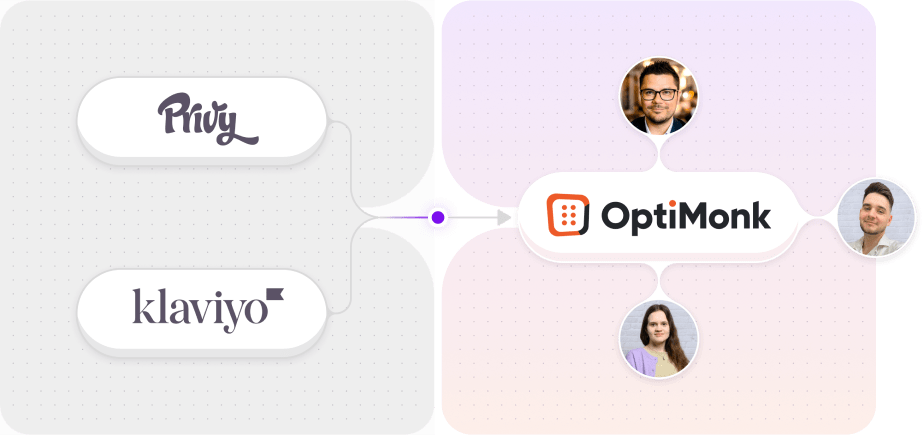
What should you do next?
Thanks for reading till the end. Here are 4 ways we can help you grow your business:
Boost conversions with proven use cases
Explore our Use Case Library, filled with actionable personalization examples and step-by-step guides to unlock your website's full potential. Check out Use Case Library
Create a free OptiMonk account
Create a free OptiMonk account and easily get started with popups and conversion rate optimization. Get OptiMonk free
Get advice from a CRO expert
Schedule a personalized discovery call with one of our experts to explore how OptiMonk can help you grow your business. Book a demo
Join our weekly newsletter
Real CRO insights & marketing tips. No fluff. Straight to your inbox. Subscribe now
Nikolett Lorincz
- Posted in
- Marketing
Partner with us
- © OptiMonk. All rights reserved!
- Terms of Use
- Privacy Policy
- Cookie Policy
Product updates: January Release 2025

